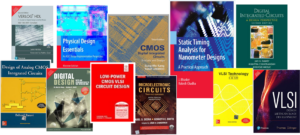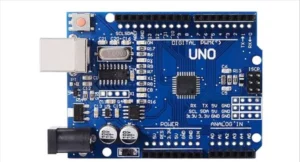Introduction:The Compatibility Puzzle
The team at MicroTech Innovations faced a critical challenge: seamlessly integrating AetherX into a diverse array of applications and devices.
They recognized that for the chip to realize its full potential, it needed to be compatible with a wide range of systems, operating environments, and software frameworks.
The conflict emerged as the engineers grappled with the complexities of compatibility. They realized that each application and device had its unique specifications, requirements, and interfaces.
The challenge lay in ensuring that AetherX’s power, performance, and features could be harnessed effectively across a multitude of scenarios.
As they delved into the compatibility puzzle, the team encountered moments of uncertainty.
They understood that the conflict stemmed from the need to create a chip that seamlessly integrated into various ecosystems without compromising its transformative capabilities.
Follow us on Linkedin for everything around Semiconductors & AI
Conflict: Adaptation and Interoperability
This witnessed the engineers navigating the maze of adaptation and interoperability. They recognized that the conflict arose from the necessity to strike a balance between AetherX’s core architecture and the specific demands of different applications and systems.
The team faced the challenge of designing interfaces. APIs, and drivers that would enable smooth communication between AetherX and various software platforms.
The engineers understood that a failure to address compatibility issues, It could limit the chip’s applicability and hinder its potential to revolutionize AI applications.
The Pursuit of Seamless Integration
The team embarked on a relentless pursuit of seamless integration, determined to resolve the compatibility conflict and ensure AetherX’s adaptability across a multitude of environments.
They collaborated with software engineers, system architects, and industry experts to identify the unique requirements of different applications.
Through iterative design and meticulous testing, they developed standardized interfaces and protocols .It allowed AetherX to communicate seamlessly with diverse software platforms.
The engineers implemented adaptive drivers and dynamic configuration mechanisms. It is enabling the chip to adjust its behavior based on the needs of the host system.
As they fine-tuned the compatibility solutions, the team encountered challenges and complexities. They knew that the conflict could only be resolved through innovative design and a commitment to ensuring AetherX’s seamless integration.
Universal Compatibility Achieved
The team’s dedication to seamless integration bore fruit as they unveiled AetherX’s achievement of universal compatibility.
The chip now seamlessly integrated into a wide range of applications, devices, and systems. showcasing its ability to adapt and perform optimally across diverse environments.
The engineers marveled at AetherX’s versatility as it effortlessly communicated with different software frameworks, operating systems, and hardware architectures.
The chip’s compatibility breakthrough solidified its position as a versatile and adaptable solution, capable of driving innovation in various industries.
With the conflict of compatibility resolved, the team celebrated their success. AetherX’s ability to seamlessly integrate into different ecosystems. It marked a significant milestone in the chip’s journey, expanding its reach and impact across a multitude of applications.
Resolution: Universal Adaptability
In the resolution, the engineers reveled in their achievement as AetherX emerged as a universally compatible VLSI chip.
The compatibility conflict that once loomed had been overcome through innovative design, meticulous testing, and unwavering dedication.
AetherX’s universal adaptability opened doors to new possibilities. It is enabling industries and users to harness its transformative potential across a wide spectrum of scenarios.
Its successful integration into diverse ecosystems marked a pivotal moment in the chip’s journey, showcasing its readiness to revolutionize the world of artificial intelligence.
Read previous parts: Journey of a VLSI Chip
Next Chapter:
Having achieved universal compatibility, the team now faces the challenge of optimizing AetherX’s energy consumption for a sustainable and eco-friendly future.
In the next chapter, join the engineers as they explore innovative ways to enhance the chip’s energy efficiency and minimize. Its environmental impact, uncovering strategies that shape AetherX’s destiny as a trailblazing force in the ever-evolving world of AI.
Discover how their commitment to excellence continues to drive AetherX towards a more sustainable and transformative future.




